Full Body Massage for Women: Your Comprehensive Guide
When you think about a full body massage that covers the head, torso, arms, and legs, the image of total relaxation comes to mind. This guide shows exactly how to deliver that experience safely, respectfully, and effectively. Whether you’re a partner, friend, or budding therapist, you’ll learn the essential steps, tools, and mindset needed to make the session enjoyable for both parties.
Understanding the Basics of a Full Body Massage
Origins and History
Massage dates back to ancient Egypt and China, where healers used oil‑based strokes to ease muscle tension. The modern Swedish massage a gentle, flowing style that forms the backbone of most full‑body sessions emerged in 19th‑century Europe and was popularized in the West as a wellness staple.
Core Principles or Components
A full body massage typically combines three core components: effleurage long, gliding strokes, petrissage kneading movements to work deeper muscles, and friction targeted pressure on tension points. Together they improve circulation, release knots, and promote a sense of calm.
How It Differs from Related Practices
| Practice | Key Feature | Primary Benefit |
|---|---|---|
| Full Body Massage | All major muscle groups | Whole‑body relaxation |
| Spot Massage | Focus on a single area | Targeted pain relief |
| Shiatsu | Finger pressure on meridians | Energy flow balance |
Unlike a spot massage, a full body session flows continuously from head to toe, allowing the nervous system to unwind gradually.
Who Can Benefit?
Anyone seeking stress relief can benefit, but it’s especially useful for people with sedentary jobs, athletes recovering from light strain, and those who simply enjoy pampering. Consent and comfort are non‑negotiable, so clear communication is key before beginning.
Benefits of a Full Body Massage for Women
Stress Reduction
Gentle strokes trigger the parasympathetic nervous system, lowering cortisol levels. A 20‑minute session can shave minutes off a typical heart‑rate recovery time, leaving you feeling refreshed.
Improved Circulation
The rhythmic motion pushes blood through capillaries, delivering oxygen and nutrients to skin and muscles. This can reduce puffiness and give the skin a healthy glow.
Emotional Well‑Being
Physical touch releases oxytocin, the "bonding hormone," which lifts mood and can ease mild anxiety. Many report a lingering sense of calm that lasts hours after the session.
Practical Everyday Advantages
A relaxed body moves more efficiently, meaning everyday tasks-like lifting groceries or typing-feel easier. Below is a quick snapshot of the main perks.
| Benefit | Description | Impact |
|---|---|---|
| Stress Reduction | Lowers cortisol, calms mind | Better sleep, focus |
| Circulation Boost | Increases blood flow | Reduced swelling, radiant skin |
| Oxytocin Release | Enhances mood | Less anxiety, stronger relationships |
What to Expect When Giving a Full Body Massage
Setting or Context
Choose a quiet room, dim the lights, and play soft music. A sturdy massage table covered with a clean sheet and a supportive face cradle is ideal, but a firm mattress on the floor works too.
Key Processes or Steps
- Discuss boundaries, pressure preference, and any health concerns.
- Warm up the oil (or lotion) and test a small area for skin reaction.
- Begin at the shoulders, moving down each limb with slow, continuous strokes.
- Use deeper pressure on the back and thighs, then finish with light strokes on the scalp and feet.
- Wrap up with a gentle hand‑over‑heart gesture to signal closure.
Customization Options
Adjust pressure, choose an aroma (lavender, eucalyptus) for aromatherapy enhances relaxation through scent, or incorporate warm stones for extra muscle relief.
Communication and Preparation
Ask open‑ended questions like, "How does this pressure feel?" throughout the session. Consent isn’t a one‑time checkbox; it’s a running conversation.
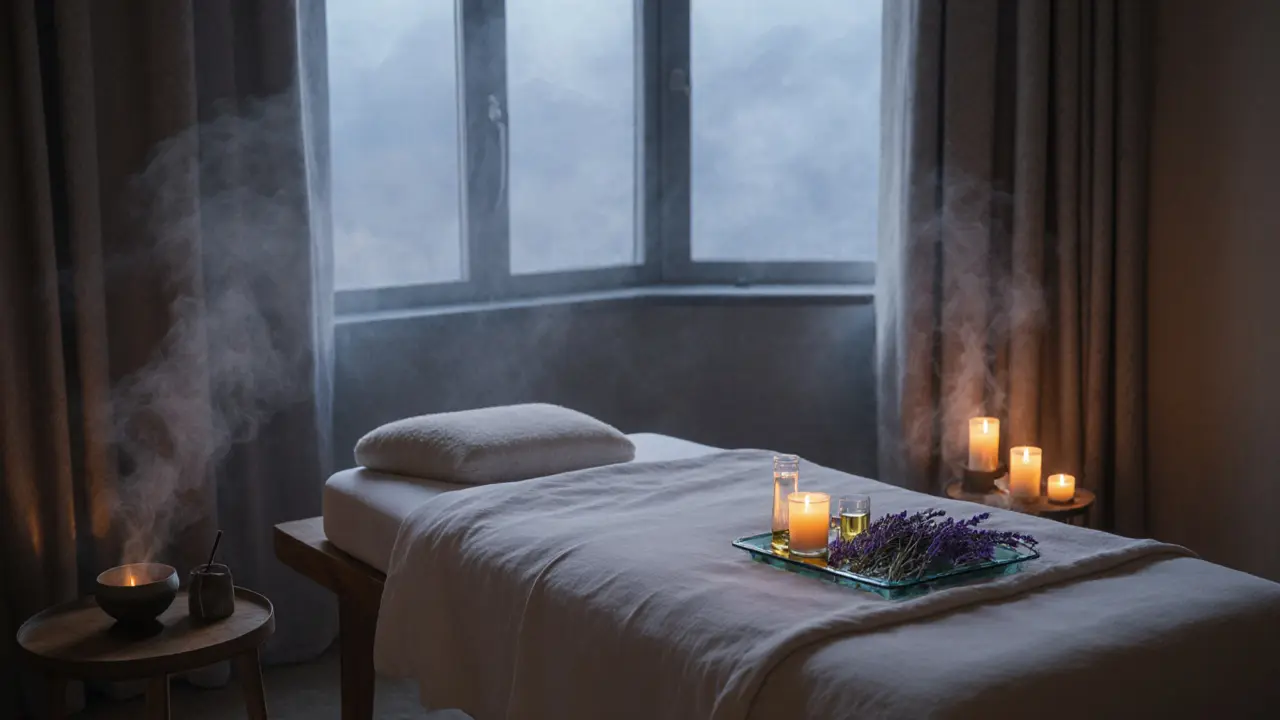
How to Perform a Full Body Massage
Setting Up for Success
Clear the space of clutter, set the temperature around 24‑26°C (75‑78°F), and have towels, oil, and a timer ready. A calm environment reduces distractions for both giver and receiver.
Choosing the Right Tools
Pick a hypoallergenic oil-sweet almond or jojoba are popular choices. Avoid scented oils if the receiver has allergies. A small basin to warm the oil can make the experience more luxurious.
Step‑by‑Step Guide
- Establish consent: Review comfort zones and any medical restrictions.
- Warm the oil in your palms, then spread a thin layer over the recipient’s back.
- Start with effleurage long gliding strokes along the spine, moving outward toward the shoulder blades.
- Transition to petrissage kneading motion on the trapezius, loosening tight knots.
- Apply focused friction circular pressure on tense spots like the lower back and calves.
- Move down the arms, wrists, and hands using gentle strokes, then repeat the pattern on the legs.
- Finish with light effleurage on the scalp and a brief foot massage to signal the end.
- Cover the body with a blanket, let the receiver rest for a few minutes, then discuss how they felt.
Tips for Beginners or Couples
- Practice on yourself first; you’ll understand pressure levels better.
- Keep movements slow-speed creates tension, not relaxation.
- If you’re a couple, set a timer for each body zone (about 5‑7 minutes) to stay balanced.
Safety and Ethical Considerations
Choosing Qualified Practitioners or Resources
If you’re hiring a professional, verify their certification through a reputable body such as the American Massage Therapy Association (AMTA) or local Dubai health authority.
Safety Practices
| Practice | Purpose | Example |
|---|---|---|
| Hand Hygiene | Prevent infection | Wash hands before and after the session |
| Allergy Test | Avoid skin reactions | Apply oil to a small wrist area first |
| Clear Communication | Maintain comfort | Ask for pressure feedback every 2‑3 minutes |
Setting Boundaries
Both parties should voice limits-areas that are off‑limits, desired pressure range, and any emotional triggers. Write these down if it helps keep everything transparent.
Contraindications or Risks
Avoid full body massage if the recipient has open wounds, recent surgeries, severe osteoporosis, or uncontrolled hypertension. In such cases, consult a physician first.
Enhancing Your Experience
Adding Complementary Practices
Combine the massage with deep‑breathing exercises or a short guided meditation to deepen relaxation. A few minutes of mindfulness after the session can extend the calm for hours.
Collaborative or Solo Engagement
Solo self‑massage works for the feet, hands, and neck using a foam roller or massage ball. For couples, synchronize breathing to foster a shared sense of intimacy.
Using Tools or Props
Warm stones, heated pads, or a vibrating handheld device can add variety. Ensure any tool is clean and set to a comfortable temperature.
Regular Engagement for Benefits
Consistency beats intensity. A 30‑minute full body session once a month maintains muscle health and keeps stress levels low.
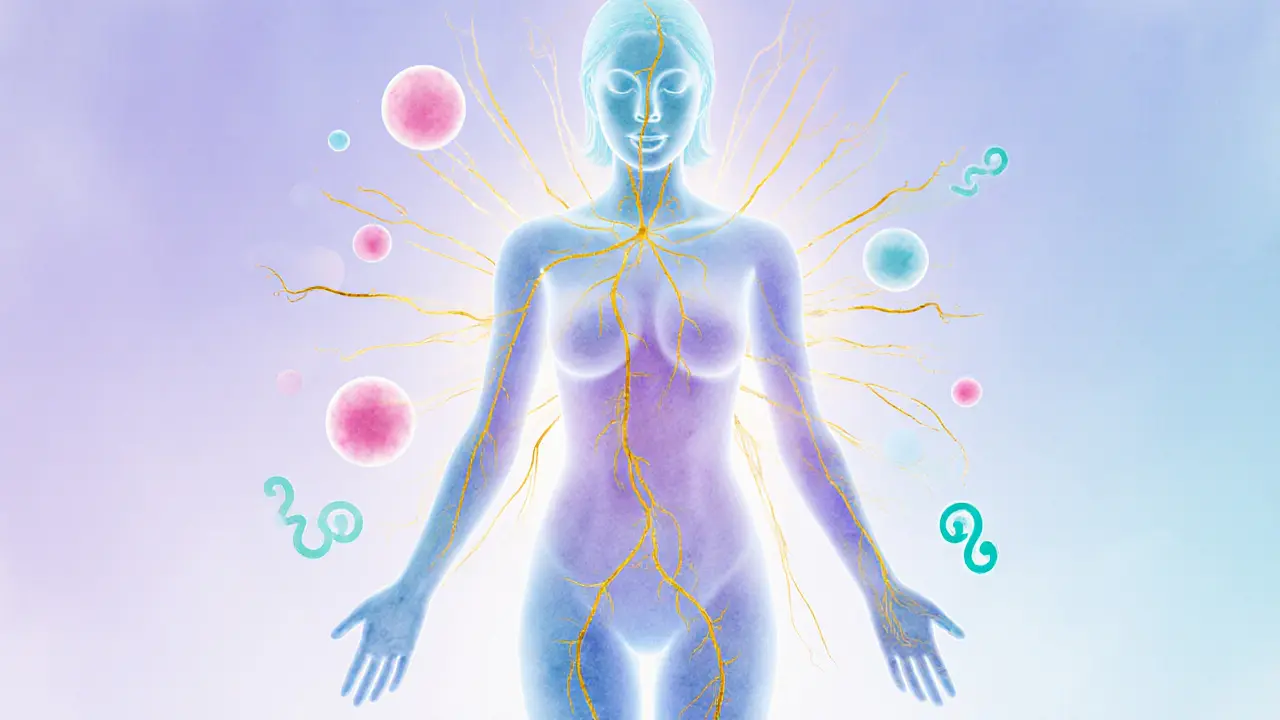
Finding Resources or Experts
Researching Qualified Experts
Look for certifications, read client testimonials, and confirm that the therapist practices in a licensed spa or wellness center in Dubai.
Online Guides and Communities
Forums like Reddit’s r/MassageTherapy and instructional videos on reputable health platforms provide free tips and answer niche questions.
Legal or Cultural Considerations
In the UAE, massage services must adhere to health authority regulations. Ensure the provider respects local customs regarding gender interactions.
Resources for Continued Learning
Books such as "Massage Therapy: Principles and Practice" and courses offered by local wellness schools can deepen your technique.
FAQ: Common Questions About Full Body Massage for Women
What should I expect during a full body massage?
You’ll start with a brief chat about comfort levels, then the therapist will use warm oil and slow strokes that travel from the shoulders down to the feet. The session ends with lighter strokes and a few minutes of rest. The whole process usually lasts 60‑90 minutes.
How is a full body massage different from a back‑only massage?
A back‑only massage focuses solely on the spinal area, targeting tension there. A full body massage covers the head, neck, arms, torso, legs, and feet, providing a holistic relaxation effect that influences the entire nervous system.
Can I give a full body massage to my partner at home?
Yes, as long as both people discuss limits beforehand, keep the environment clean, and use hypoallergenic oil. Start with gentle pressure, and always check in about comfort.
Is a full body massage suitable for beginners?
Absolutely. Beginners should focus on basic effleurage and light petrissage, avoid deep pressure on sensitive spots, and practice on themselves first to gauge how much force feels right.
What are the main safety risks?
Risks include skin irritation from oil, muscle soreness if pressure is too intense, and contraindications for people with certain medical conditions. A quick health check and clear communication mitigate most issues.
Conclusion: Why a Full Body Massage Is Worth Exploring
A Path to Whole‑Body Well‑Being
From lower stress hormones to improved circulation, a full body massage delivers benefits that ripple through daily life. It’s a simple, non‑invasive way to nurture both body and mind.
Try It Mindfully
Start with a trusted professional or a carefully set‑up home session, respect boundaries, and listen to the body’s feedback. When done right, the experience feels like a warm embrace for the entire self.
Share Your Journey
Have you tried a full body massage? Drop a comment about how it felt, or follow our blog for more wellness tips. Your story helps others decide what works best for them.
Some links may be affiliate links, but all recommendations are based on research and quality.
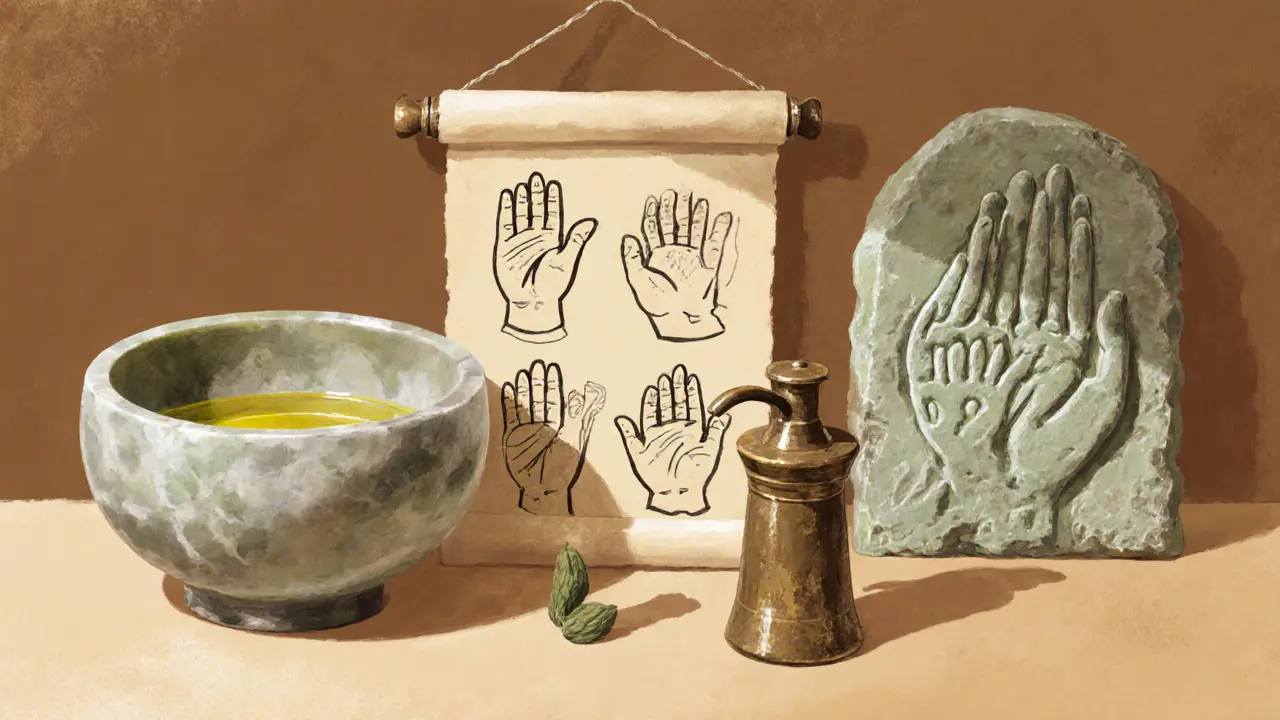
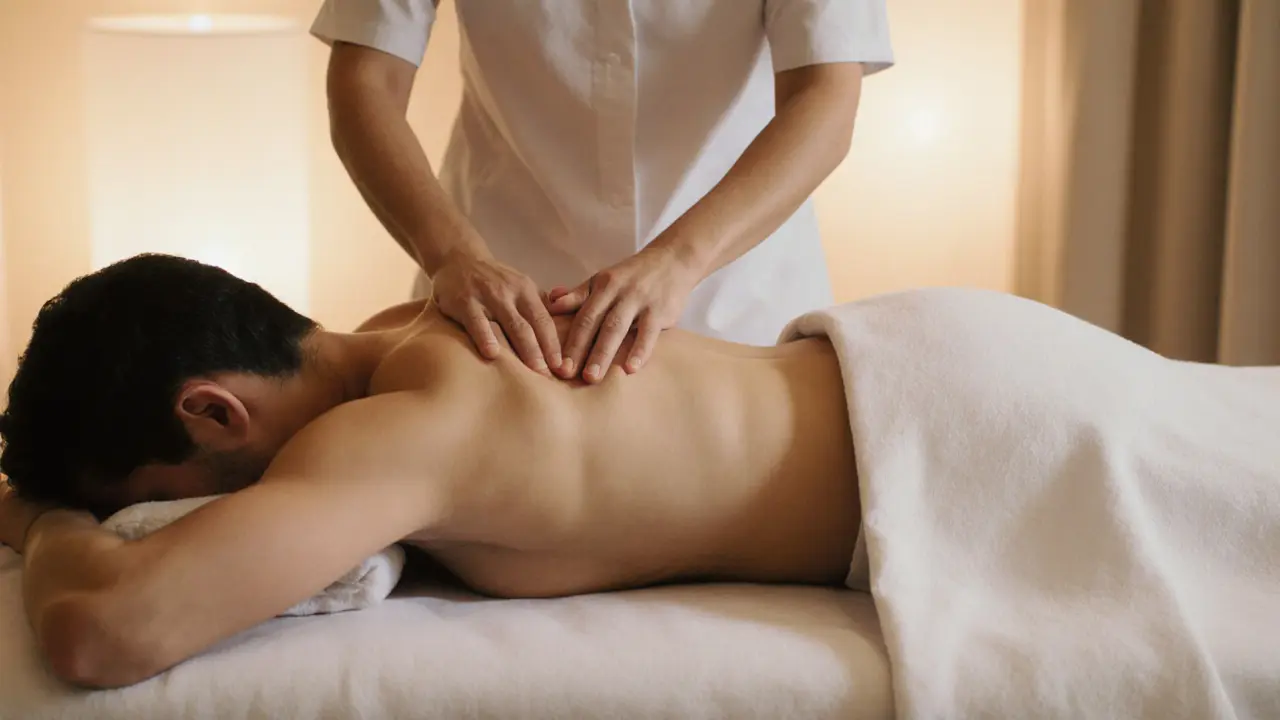
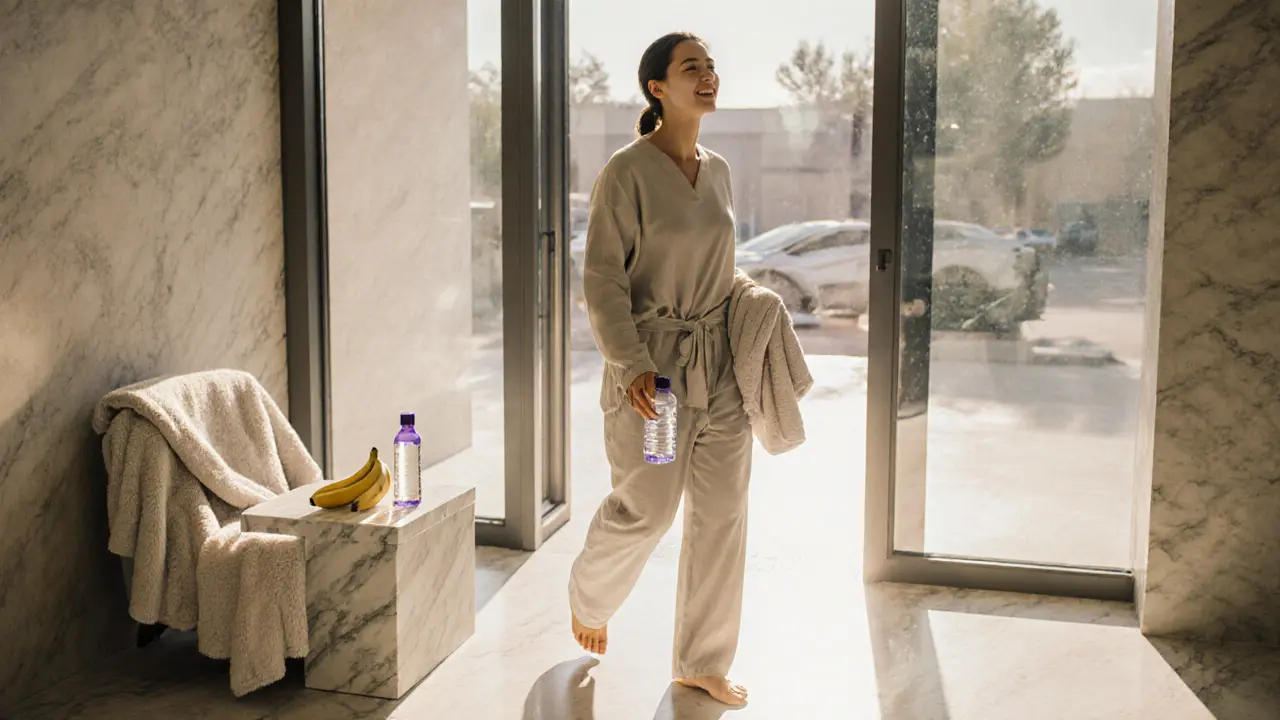

Nancy Espinoza
October 8, 2025 AT 16:50Wow this guide feels like a journey through the senses it reads like a poem about touch and calm the steps are laid out so clearly you can actually feel the flow of a massage just by reading it I love how it blends history with practical tips the tone is soothing yet confident it invites anyone to try it without feeling intimidated the emphasis on consent really hits home and makes the whole thing feel respectful and safe
Kate Cole
October 8, 2025 AT 18:13While I appreciate the enthusiasm expressed above, I would like to point out a few stylistic considerations. The article correctly emphasizes consent, which is paramount in any therapeutic context. However, the phrase “a warm embrace for the entire self” could be refined to avoid redundancy. Additionally, consistency in using the Oxford comma throughout the benefits tables would improve readability. The historical overview is accurate, though citing primary sources would strengthen credibility. Overall, the guide is well‑structured and offers valuable practical advice.
Angie Torres
October 8, 2025 AT 19:36Sounds good but it’s just another fluff article.
Sharon Chui
October 8, 2025 AT 21:00Honestly, I suspect there’s more behind the glossy descriptions than they let on. The wellness market often hides profit motives behind soothing language, and “certified” practitioners sometimes skim the line of legitimacy. It’s wise to stay vigilant and question whether the recommended oils are truly hypoallergenic or just a marketing ploy. Remember, even a calm environment can be a subtle arena for hidden agendas.
Aradhana Agarwal
October 8, 2025 AT 22:40I understand your hesitation, and it’s important to approach any new practice with a healthy dose of skepticism. Clear communication about boundaries, as the guide outlines, is the best safeguard against unwanted outcomes. Choosing truly hypoallergenic oils-testing a small area first-helps avoid skin reactions. If you feel uneasy, consider a licensed therapist with verifiable credentials and ask for references before committing.
Mariam Mosallam
October 9, 2025 AT 00:20Oh sure, because a therapist’s “verified credentials” magically erase every risk-like a vaccine for bad vibes. You’ll still get the same cheap oil, the same background music, and the same “relaxation” if you’re not paying attention. But hey, at least you can brag about reading a long article before the massage.
Dan Garcia
October 9, 2025 AT 02:00First of all, thank you all for sharing such a diverse range of perspectives on this topic! It’s clear that the conversation around full‑body massage is multifaceted, encompassing historical, ethical, and practical dimensions. Let’s break down a few key points that might help synthesize these viewpoints. Consent, as highlighted repeatedly, remains the cornerstone of any therapeutic touch; without it, the benefits of massage cannot be fully realized. When selecting oils, always perform a patch test on a discreet area of skin-this simple step can prevent unwanted allergic reactions and build trust between giver and receiver. Temperature control of the room (ideally 24‑26 °C) enhances muscle elasticity and promotes deeper relaxation, something often overlooked in casual settings. For beginners, mastering basic effleurage before attempting deeper petrissage is advisable; it allows the practitioner to develop a feel for pressure gradients and patient feedback. Communication should be ongoing, not a one‑time checklist; a simple “how does this feel?” every two to three minutes can make a world of difference. Regarding certifications, verify that the therapist’s credentials are recognized by reputable bodies such as the American Massage Therapy Association or its local equivalents; this adds a layer of accountability. If you’re operating at home, ensure the space is clutter‑free, the surface is firm yet comfortable, and privacy is respected-these environmental factors contribute significantly to the overall experience. While some commercial establishments may employ marketing tactics, many reputable practitioners adhere strictly to ethical standards and evidence‑based practices. It’s also worth noting that regular, moderate sessions (e.g., 30 minutes once a month) often yield better long‑term health outcomes than sporadic, intensive treatments. Finally, remember that self‑care is not selfish; investing time and effort into proper massage techniques can improve circulation, reduce stress hormones, and enhance emotional well‑being for both giver and receiver. Keep exploring, stay curious, and always prioritize safety and respect in every session. Happy massaging!